Quick Links
Every sales rep knows that you only get one chance to make an outstanding first impression on a new client.
That’s why reps place so much emphasis on that first point of contact – like really knocking it out of the park with a riveting sales pitch or an engaging product demo.
Yet, most prospects won’t immediately make a purchase, as they may need some time to weigh other options, gain approval from their team, or free up enough time to complete the sale.
While this fact can discourage some, it’s crucial to stay persistent with your efforts – hence the need for sales follow-ups.
According to data, 80% of sales require 5 follow-up calls, which may seem excessive at first.
After all, many sales reps shy away from following up too much in fear of seeming too pushy.
However, 5 follow-ups are par-the-course for most customers, as Marketing Donut points out with their research – 92% of reps give up after four ‘no’s,’ but 80% of prospects say ‘no’ four times before saying ‘yes.’
So don’t give up if a prospective customer doesn’t say yes straight away, as most will not.
That doesn’t mean that you should go nuts and follow up with your prospects every single day, either.
It takes tactfulness to determine when to follow up & which method to use (i.e., phone calls, text messages, follow-up emails, etc.) – so stay tuned to learn how.
Why Should You Follow Up with Customers?
First, it’s important that we make a clear distinction.
There’s a big difference between spamming uninterested prospects with messages and properly following up with qualified leads.
The former will get you absolutely nowhere with your marketing strategy, while the latter will yield tons of new business.
Many salespeople have an irrational fear that their follow-up messages will be seen as spam by their prospects, which is why they adopt such a skittish attitude towards it.
They need to know that as long as you’re following up with a qualified lead that hasn’t outright declined interest in what you’re selling, follow-up messages are fair game.
While you still need to be tactful with how and when you send your follow-ups (i.e., don’t go crazy and call them every day), you can and should send as many follow-up messages as it takes to get a response.
There are plenty of real-world examples where reps finally landed a sale after following up with prospects 40 – 100 times.
As an example, James Altucher cold-emailed hedge fund billionaire Stevie Cohen for an entire year before finally receiving a response – a true testament to the power of persistence.
The point is that you should never give up on a qualified lead that goes cold. If you continue to receive no response, keep trying to contact them every week until you do. Even if you get a definitive no, at least you saw it through until the end.
According to the data gathered by Scripted, 44% of salespeople give up after only one follow-up call, which is leaving quite a few sales on the table, given the other stats that we know are true (such as 80% of sales requiring five follow-up calls).
The Benefits of Customer Follow-Ups
As long as you take the right approach, following up with your sales prospects will yield numerous benefits for your organization.
Besides sending follow-ups to your most qualified leads, you should also follow up with your existing customers to ensure they’re satisfied with your products and services.
That will ensure that your existing customers remain loyal and continue to choose your brand over the competition.
Follow-up messages let your established customers know that you care, and they help boost conversions for your prospects. Here’s a closer look at the top benefits you’ll enjoy from improving your ability to follow up with customers.
Following up shows you care
Whether you’re pursuing a qualified lead or want to check in with one of your existing customers, follow-up calls and emails let your customers know that you care.
That’s especially true when following up with your established customers.
You’ve already made the sale, but you’re checking in to ensure their continued satisfaction with your products and services.
Also, be open to customer feedback when checking in with existing customers. If you’re willing to listen to their suggestions for improvement, it shows that you care about catering to your customer’s needs – which can pay off in a big way.
According to a survey by Acquia, 75% of American consumers are more likely to show loyalty to a brand that understands them on a personal level, which is why listening to feedback is crucial.
Beyond that, the survey also found that once customers commit, they tend to remain loyal for life.
Also, following up on leads shows that you care about landing the sale and that you’ll do whatever it takes to gain their business.
82% of buyers will at least consider accepting meetings with sales reps that reach out to them for this very reason. Tenacity pays off and can even be flattering to customers, so don’t be shy about pursuing active leads with all your might to boost sales.
It improves your customer experience (CX)
While this benefit primarily applies to following up with your existing customer base, pursuing sales leads can also boost your CX.
If you’re consistently following up with a lead in a way that’s tenacious yet tactful, it serves as a preview of what it’s like to be one of your company’s customers. In particular, your follow-ups can serve as a window into what your customer support will be like.
So if you’re sending well-written follow-up messages in tandem with the prospects’ schedule (i.e., not calling them on a day when you know they’re busy) – it can reflect positively on your organization as a whole.
That can actually help you land the sale – as stellar customer service is a top factor (56%) for building customer loyalty.
Follow-up calls with existing customer relationships are even more important for your CX. That’s especially true if a customer has had a negative experience with your brand.
The follow-up will give them a chance to vent about their experience, and you’ll get a chance to apologize, resolve the issue, and retain their business.
Customers appreciate when brands care enough to reach out and resolve their issues. In fact, 59% of customers state that fast, consistent, and satisfactory answers to their queries is key to gaining their trust & loyalty.
It gives you a chance to address any issues
You never know when a prospect or existing customer will run into issues with your products and services.
It could be that they have an additional question regarding your product, or they could have run into a problem when trying to use your product.
Either way, your follow-up calls and emails are the perfect opportunities for catching & resolving these issues before they can affect your reputation or cause you to lose a sale.
It’s important to follow up with new customers (especially if they bought a new product) to see if everything is working out the way they wanted. To make your follow-up emails even more helpful, you can include a list of FAQs new customers tend to have about your products and services.
Following up also gives you a chance to address and resolve any issues your potential customers may have.
For instance, let’s say you really impress a lead with a product demo, but you don’t hear back for a week. By following up to check in with the prospect, you uncover that they have additional concerns regarding pricing.
They’d like to buy your product, but after convening with their higher-ups, it was determined that they lacked the funds to make it happen.
Rather than losing the sale, you inform them of special offers that will knock down the price of your product (or of lower-tier subscription plans that won’t hit their wallet as hard).
That’s a simple example of how following up can help you catch and address issues that would have cost you a sale otherwise.
Following up reminds customers that you exist
The average person today receives dozens of emails, phone calls, texts, and voicemails every single day.
So if you send a qualified lead a follow-up email, the chances of them seeing it and actually spending the time to read it are quite slim.
That’s why you shouldn’t get discouraged if your prospects don’t respond to your initial follow-up emails.
In fact, it may take 10 or 20 emails before you actually get a response.
Remember, keep following up with leads until they reply. If they tell you in no uncertain terms that they’re not interested, leave them alone and remove them from your follow-up list. However, if you’ve yet to receive a reply – it’s probably because the prospect is far too busy and hasn’t had the time to respond yet.
Sending regular follow-up messages to your prospects will remind them that you exist, which is crucial to do in today’s oversaturated market.
Don’t forget that while you’re sending emails in hopes of a response, your competitors likely are at the same time – so keep trying.
The Best Ways to Follow Up with Customers
Now that you know not to be shy about following up with qualified prospects, it’s time to learn the best methods for doing so.
There’s a lot that goes into deciding how and when to follow up with a customer, not to mention which contact method to choose.
Should you text, call, or email your existing and prospective customers?
Beyond that, you need to determine how often to reach out without overstepping your bounds or disappearing entirely.
Checking in with prospects and customers is an art form, so let’s take a look at the best practices for customer follow-ups.
Vary your contact methods
There’s no one-size-fits-all contact method for getting in touch with customers, as everyone has different needs.
For instance, if you only send follow-up emails to your prospects, you may run into customers that never check their email. As a result, every follow-up message you send shoots off into a black hole, never to be seen again.
However, if you do a little digging and discover that despite never checking their inbox, the client is very active on LinkedIn and other social media platforms – messaging them through there is the way to go.
Conversely, sending an email may yield better results if you try calling a client but receive their voicemail every time.
It’s important to utilize more than a few contact methods for each client until you receive a reply.
The only exception to this rule is if the customer provides you with their preferred contact method. In that case, you should stick to it like glue – otherwise, you may wind up annoying the prospect.
You should be mindful of your contact methods even when following up with your existing customers.
If you’re trying to follow up with a new customer but aren’t receiving replies through text or email, you can try looking them up on social media or try calling their phone number. Going the extra mile to contact them can build trust and ensure total customer satisfaction.
Write stand-out subject lines
Your subject lines will make or break your follow-up emails.
Since the average inbox contains hundreds of unread emails, if your subject line doesn’t immediately catch the eye, it’s likely that its next destination is the trash.
Generic subject lines like “Just Checking In” should immediately be discarded for this reason. They’re far too easy to overlook, especially when they’re buried in a pile of emails with equally generic subject lines.
Without a catchy subject line for your follow-up email, the odds of your customer seeing it are akin to finding a needle in a haystack.
Want to know how to instantly boost your open rates with one simple trick?
Include the recipient’s name in the subject line.
This small tactic has a powerful impact, as one study showed that personalizing email subject lines could boost open rates by 29% – and click-through rates by 41%.
Besides personalization, other tips for writing stand-out subject lines include the following:
- Elicit a sense of urgency by including a timeframe (i.e., specific meeting dates, special offers about to expire, etc.)
- Ask direct questions to the recipient in the subject line (Is This Of Interest to You?)
- Mention the value included in the email (i.e., blog posts, videos, whitepapers, etc.)
Keep things short and sweet
The last thing you want to do in a follow-up message is ramble on and overstay your welcome.
You’re here to check in with a qualified lead or an existing customer, which means you need to get in, get to the point, and get out.
Don’t waste a few paragraphs updating them on the state of your business, and get straight to the value you have to offer. After all, it’s a follow-up message, not a newsletter.
Also, EVERY follow-up email needs to include a call-to-action (CTA) at the end.
What’s that?
A call-to-action is a brief line of text that informs your customers what you want them to do next. Here’s an example of a CTA:
We’d love to offer you 30% off your first visit, so don’t wait to take advantage of this offer now.
This sentence lets your prospects know you want them to take you up on your special offer. Also, you’d need to use the last few words of the sentence as anchor text for a hyperlink to one of your product pages.
If you’re following up on the phone, you definitely need to be concise. People have busy schedules, and they won’t have long to chat with you, so you need to make that time count.
To respect your customer’s time, it’s a good idea to let them know approximately how long the call will take at the beginning. A busy prospect will be less likely to rush you off the phone if they know the call is only going to take two minutes from the start.
Don’t get too clingy but don’t disappear
To follow up with customers like a pro, you need to master the balancing act of knowing when to follow up and when to leave your customers alone.
Purchase decisions take time, and you can’t expect to make a sale overnight.
That’s why you shouldn’t send too many follow-up messages at once.
In general, following up once a week is enough to suffice. It hits the perfect sweet spot between staying in touch and not getting too clingy.
Of course, you also need to consider the specific needs of your clients.
If you know that a prospect is taking a two-week vacation, following up with them during that time isn’t a smart idea.
Sometimes potential customers will let you know the best times to contact them, which you should adhere to without fault. Sending a follow-up message at an unexpected or unwanted time can seriously backfire, so be mindful when deciding when to send your messages.
Wrapping Up: How to Follow Up With Customers
Are you being persistent enough with your customer follow-ups?
If not, it’s never too late to start being more tenacious when pursuing your qualified leads.
You never know when you’ll receive a reply giving you the go-ahead for another meeting or to make a purchase.
People are extremely busy today, so don’t be shy about following up numerous times using various methods until you receive a reply.
Do you need help formulating your company’s winning digital marketing strategy, including effective customer follow-ups?
Get in touch with us to learn more about HOTH Performance, our premiere CRM tool.
Our marketing experts can also provide managed SEO services to take your online visibility to the next level, so don’t wait to check us out.



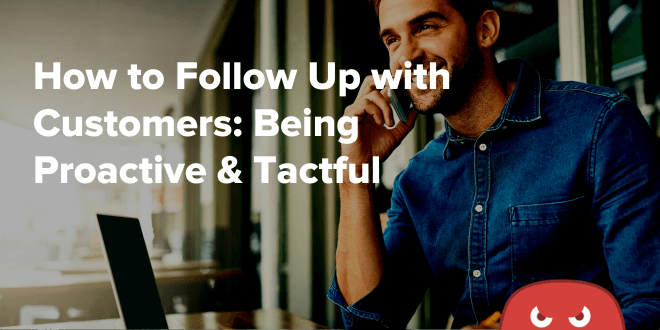


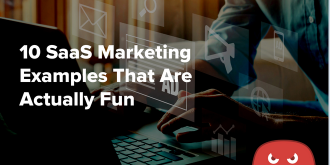
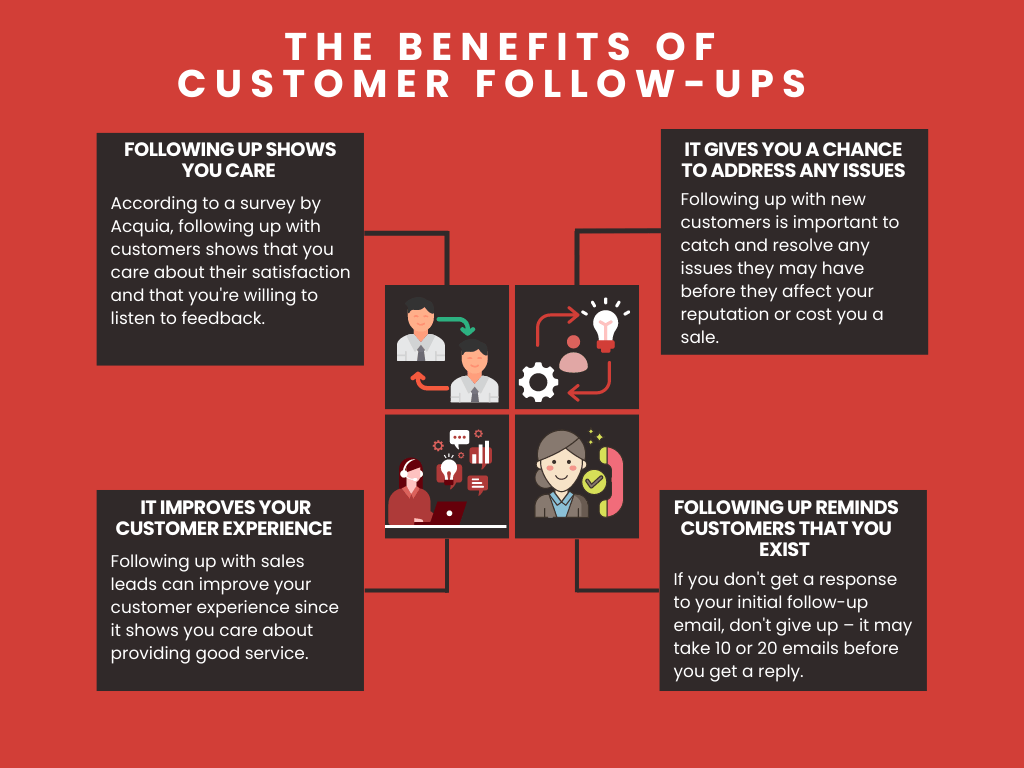
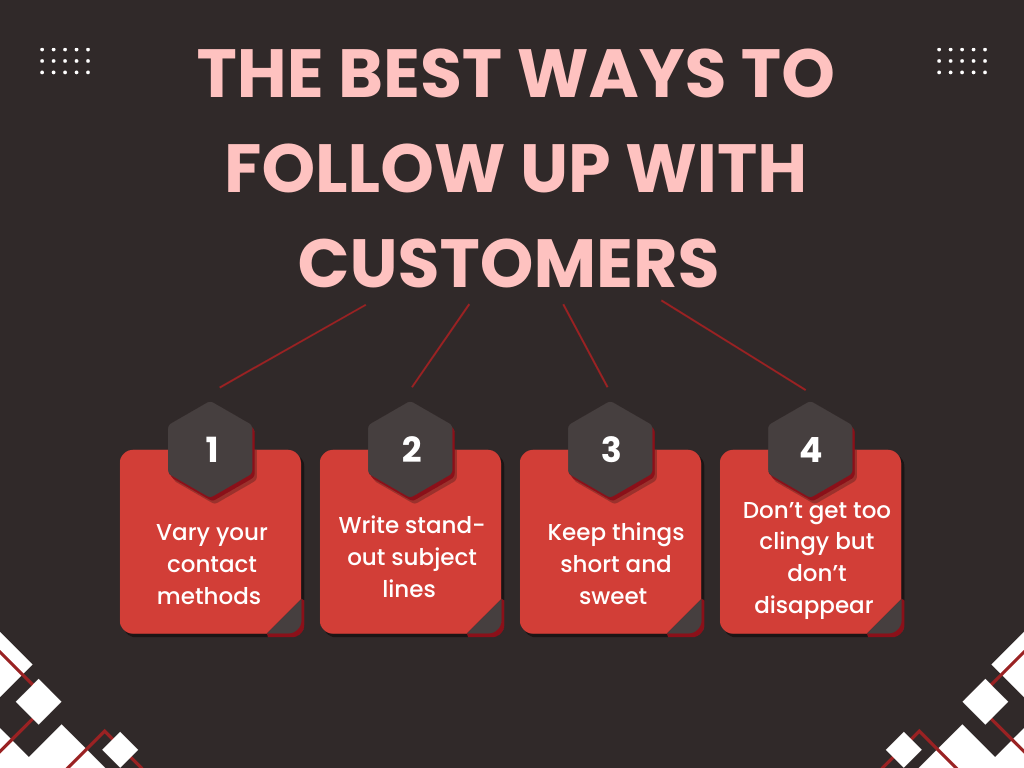
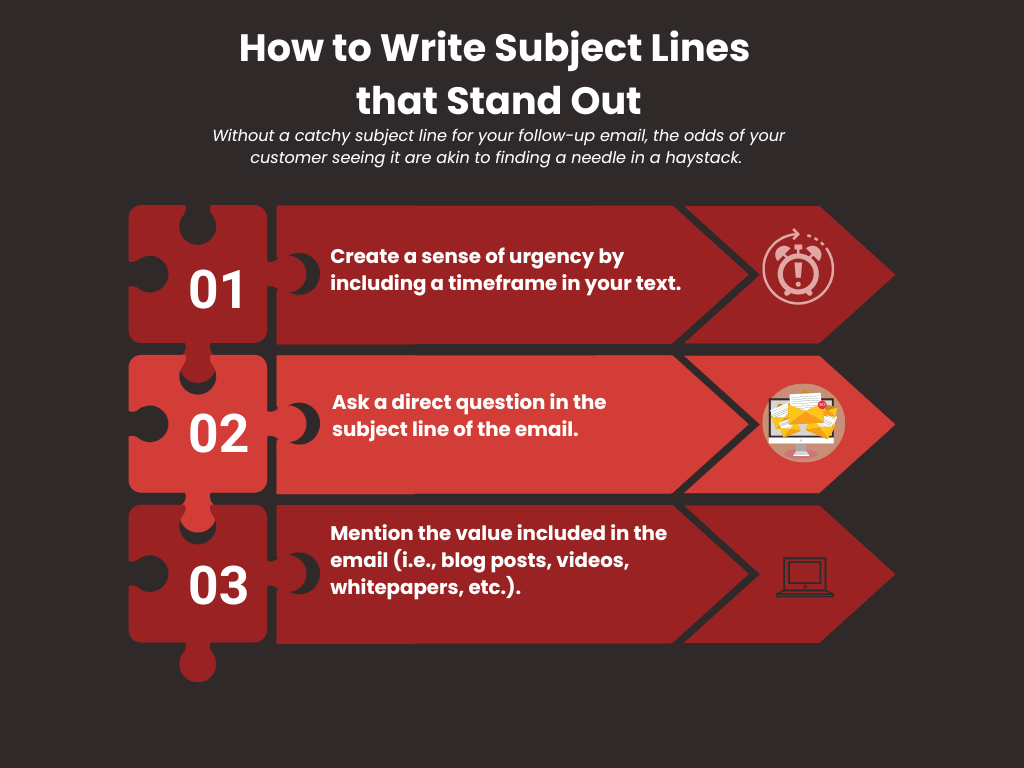


Great Article. Following up with customers in a proactive and tactful manner shows that you genuinely care about their experience. It’s the key to earning their trust and loyalty.
Thanks for charing tthis amazing content.
Nice article. Thank you